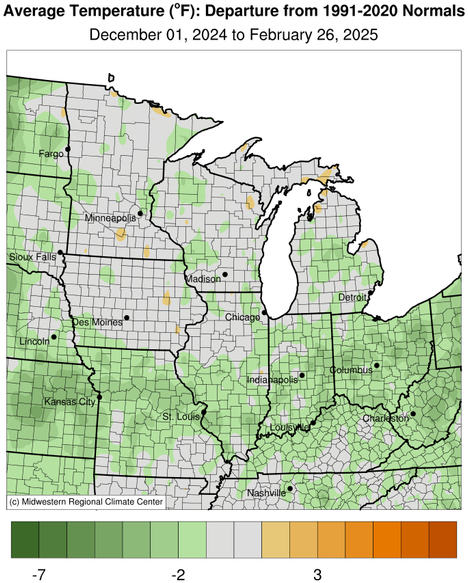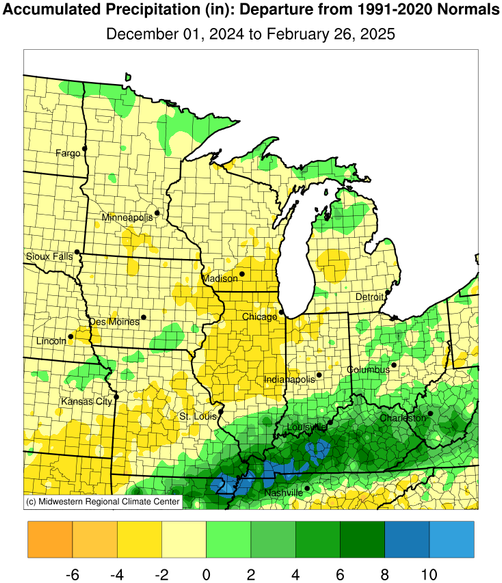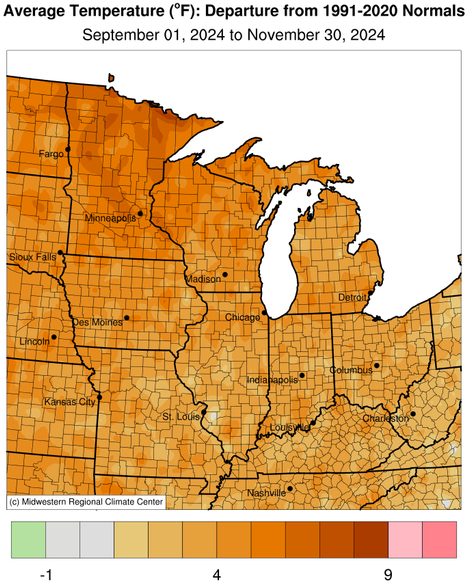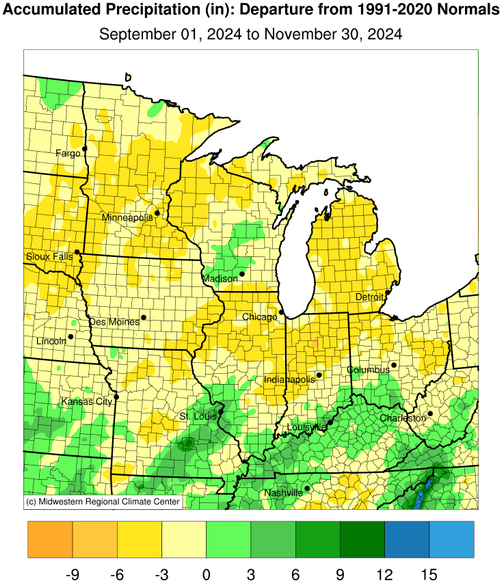To determine the relative risk of spring flooding, numerous factors are considered including snow cover, soil moisture, and current river conditions. A significant snow cover with high water content can increase the chances of flooding once warmer weather melts the snow. Elevated soil moisture conditions reduce the amount of rainfall that is soaked up by the ground and increase the amount of water that then runs off into area streams. Above average river levels reduce the river rise required to reach flood stage, while below average river levels would require an increased amount of river rise to reach flood stage.
Here is a general overview of spring flood risk factors across northeast Illinois and northwest Indiana river basins.
| Risk Factor | Has effect on... | Current Condition | Effect on Flood Risk |
| Fall/Winter River Levels |
Space in river for additional streamflow. | Much Below Average to Near Average | Decrease/No effect |
| Fall/Winter Soil Moisture |
Space in soil for additional infiltration. | Below Average to Near Average | Decrease/No effect |
| Winter Precipitation | Snow cover, the amount of water available for spring melt. | Below Average | Decrease |
| Winter Temperatures |
Frost depth, the possibility that infiltration could be blocked by frozen ground. | Above average trending to below average | Increase |
| Spring Precipitation |
Amount of water headed to area rivers. | - | - |
| Spring Temperatures | Rate of melt for snow cover. | - | - |
Valid March 13, 2025.
Modeled snow cover across area river basins is 0 inches in all areas, which contains no liquid water equivalent.
Valid March 13, 2025. Click here for the latest snow cover information.
Modeled soil moisture values across the area are generally below average.
Frozen soils have thawed since earlier spring flood outlook updates.
Valid March 13, 2025. Click here for the latest soil moisture information from the Climate Prediction Center.
River streamflow across the area ranges from much below average to near average.
River ice spotters, river gauges, and satellite imagery indicate that no river ice remains on area rivers. There is no longer any threat of flooding this spring due to river ice jams.
Valid March 13, 2025. Graphics update daily. Click here for the latest streamflow conditions from the USGS. Click here for the latest river ice spotter reports.
The long term (next several weeks) outlook from the Climate Prediction Center indicates above average temperatures and above average precipitation are slightly favored.
Although snow cover, soil moisture, and recent river levels can provide some indication of the relative risk of spring flooding, any weather system that produces heavy rainfall could cause flooding. Spring flood outlooks are not able to assess the risk of flooding due to heavy rainfall more than a week or so in advance.
Relative flood risk for river forecast locations can be viewed on the National Water Prediction Service (NWPS) page for our area.
Temperature
|
 |
Precipitation
|
 |
Snowfall
|
Temperature
|
 |
Precipitation
|
 |